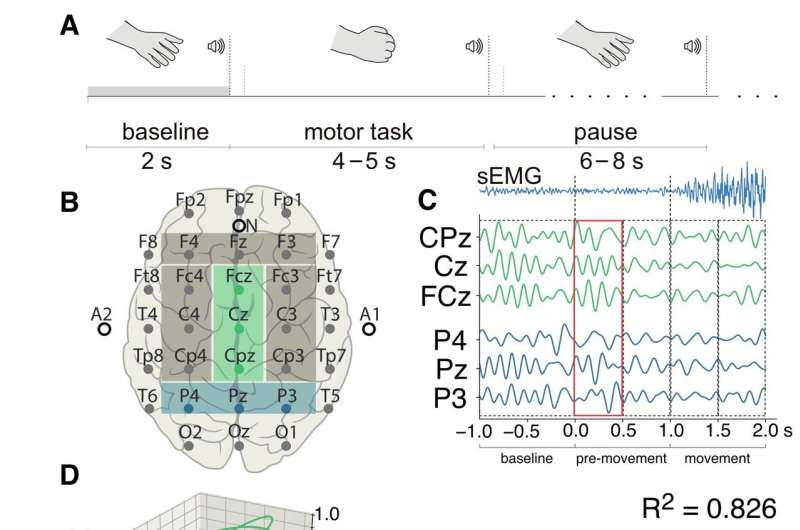A neuronet helps diagnose weakened connections between different parts of the brain

Together with colleagues from Innopolis University, scientists from Immanuel Kant Baltic Federal University used machine learning methods to study the changing connection and coordination of different parts of the brain with age.
It turned out that elderly people use neurons responsible for planning and learning when performing simple familiar movements. This confirms the idea that it is more difficult for them to acquire new motor skills and retain existing ones. The study may be useful in finding recommendations for keeping brain function in the elderly.
The results of the study are published in Sensors.
All of the brain structures interact with each other by exchanging electrical signals between nerve cells. Normal brain function requires the constant interaction of a large number of neurons, which ensures functional connectivity, or more simply, the coherence of the different parts of the brain.
Functional connectivity of people with autism, Alzheimer's disease, and multiple sclerosis are often damaged. The most common sign of the neurological disease is a disruption in the neural networks between distant parts of the brain. For example, the ones responsible for motor activity and cognitive functions like memory and attention. As a result, it becomes more difficult for a person to learn new things such as foreign languages, musical instruments, and drawing. Moreover, these connections are sensitive to age-related changes.
Together with Innopolis University (Innopolis), scientists from Immanuel Kant Baltic Federal University developed a machine learning-based method to evaluate the functional connectivity between different parts of the brain for people of different ages. The study involved ten young and ten older people.
Each one of them had fifteen encephalogram recording sensors attached to different parts of the heads. This helped to study the activity of different parts of the brain. Scientists were primarily interested in the parietal and frontal lobes, as well as the motor cortex because they connect the neurons responsible for signal perception (sensory function) and movement (motor function).
Both of these components are crucial for normal control of actions. The authors recorded brain activity under two conditions: when the participants were in a relaxed state, and when they repeatedly clenched their hand into a fist and then relaxed it by a signal.
The electroencephalograms obtained as a result of the experiment were analyzed by a deep-learning neural network. It helped to study whether the connection between motor and sensory parts of the brain was established during task performance and if so, how strong it was. It turned out that the cortex was activated differently in different age groups.
Thus, when performing simple hand movements, older subjects, compared with young people, were activating a slow neural activity in the so-called theta range. That was common for learning and performing some kind of action for the first time. The authors of the study suggested that the reason for this phenomenon is a decrease in the brain plasticity of older people.
It leads to the fact that to perform even simple and familiar actions they need to involve more neuronal connections than young people. At the same time, the functional connectivity of the different parts of the brain was stronger for the younger participants of the experiment. In addition, they had more motor memory involved in performing the movements, so the activity of neurons at the frequency related to learning and planning was reduced.
This once again confirms the assumption that with the age, it becomes more difficult to acquire new motor skills, and one needs more effort to perform motor tasks.
"Our results showed that the functional connectivity model aligned well with the current ideas about the effect of healthy aging on neuronal activation. In the future, we plan to investigate other types of inter-neuronal interactions in the brain in addition to sensorimotor ones," says Elena Pitsik, a junior researcher at the Baltic Center for Artificial Intelligence and Neurotechnology.
More information: Elena N. Pitsik et al, Age-Related Changes in Functional Connectivity during the Sensorimotor Integration Detected by Artificial Neural Network, Sensors (2022). DOI: 10.3390/s22072537


















